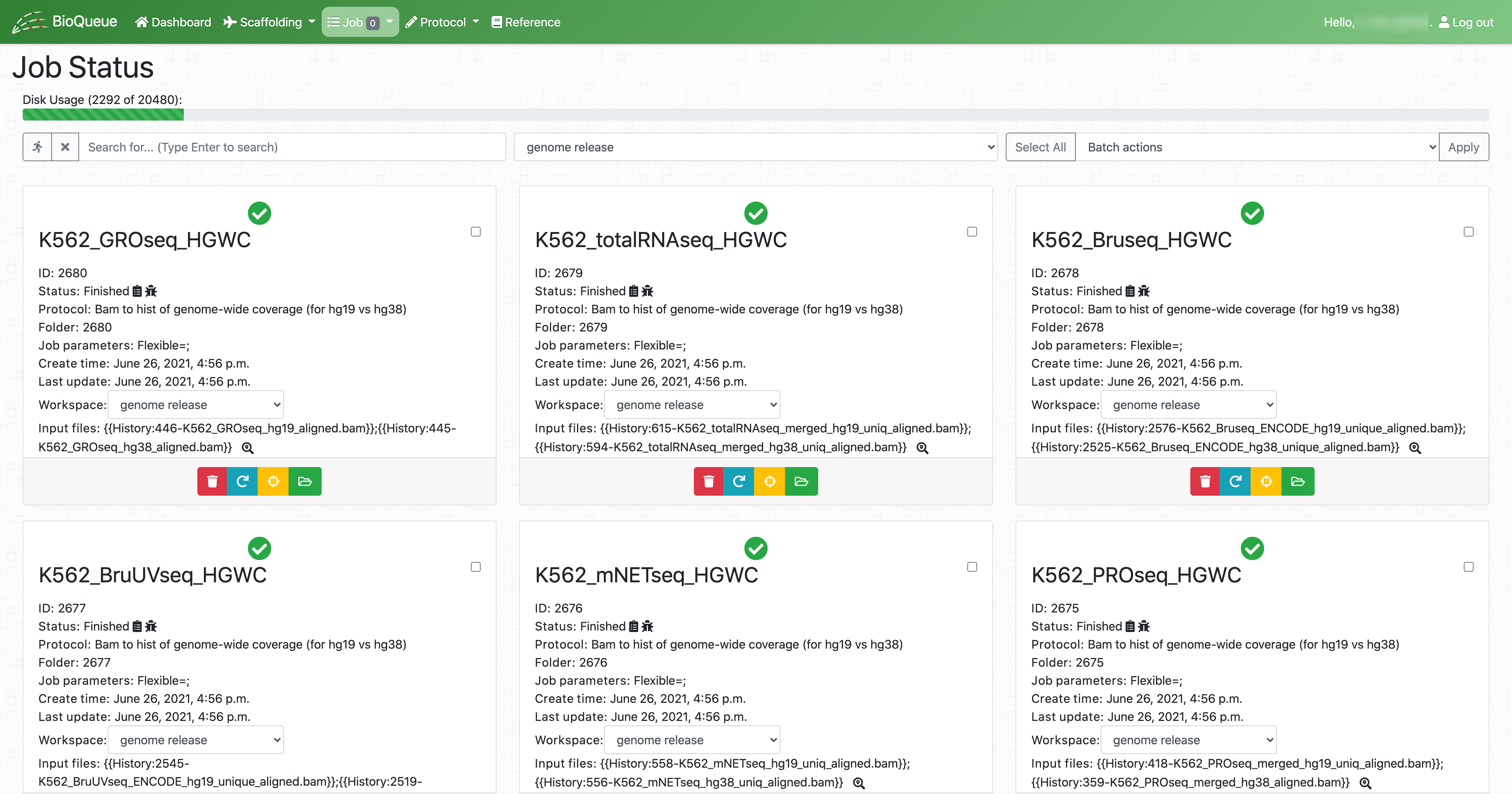BioQueue is a researcher-facing bioinformatic platform preferentially to improve the efficiency and robustness of analysis in bioinformatics research by estimating the system resources required by a particular job. At the same time, BioQueue also aims to promote the accessibility and reproducibility of data analysis in biomedical research. Implemented by Python 3.x, BioQueue can work in both POSIX compatible systems (Linux, Solaris, OS X, etc.) and Windows.
pip is the default package manager for BioQueue, so before installing BioQueue, please make sure that you have pip installed.
BioQueue can store data on SQLite, which means users can set up BioQueue without an extra database software. However, to achieve a higher performance, we suggest users to install MySQL or PostgreSQL. If you want to set up MySQL or PostgreSQL on your machine, you can visit the wiki page.
First of all, you will need to clone the project from Github (Or you can download BioQueue by open this link).
git clone https://github.com/liyao001/BioQueue.git
Or
wget https://github.com/liyao001/BioQueue/zipball/master
Then navigate to the project's directory, and run install.py script (All dependent python packages will be automatically installed):
cd BioQueue
python install.py
When running install.py, this script will ask you a few questions include:
- CPU cores: The amount of CPU to use. Default value: all cores on that machine.
- Memory (Gb): The amount of memory to use. Default value: all physical memory on that machine.
- Disk quota for each user(Gb, default value: all disk space on that machine).
If you decide to run BioQueue with MySQL or PostgreSQL, the script will ask a few more questions:
- Database host: If you install MySQL server on your own machine, enter
localhostor127.0.0.1. - Database user: user name of the database.
- Database password: password of the database.
- Database name: Name of the data table.
- Database port:
3306by default for MySQL
Then the script will interact with you and create a super user account for the platform.
Run the bioqueue.py script in the BioQueue/worker folder
python worker/bioqueue.py
python manage.py runserver 0.0.0.0:8000
This will start up the server on 0.0.0.0 and port 8000, so BioQueue can be accessed over the network. If you want access BioQueue only in local environment, remove 0.0.0.0:8000.
- To stop the queue, the webserver or the ftp server, just hit
Ctrl-cin the terminal from which BioQueue is running. - To get a better performance, moving the webserver to Apache or nginx is a good idea.
- Yao, L., Wang, H., Song, Y. & Sui, G. BioQueue: a novel pipeline framework to accelerate bioinformatics analysis. Bioinformatics 33, 3286–3288 (2017). doi:10.1093/bioinformatics/btx403
